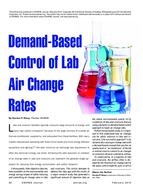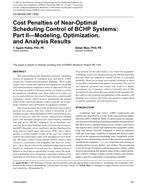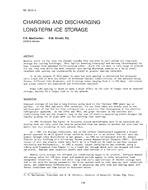Since little or no research on capillary tubing has been reported during the past 15 to 20 yrs, this paper reviews the ASHRAE HANDBOOK, 1979 Equipment Volume, Chap. 20, Pt. IV, entitled Capillary Tubes and ASHRAE Standard #28-78, Method of Testing Flow Capacity of Refrigerant Capillary Tubes.
This paper studies the effects of inside surface roughness, inside diameter tolerance, different test pressures, Reynolds numbers, friction factors, and other aspects of application and manufacture of capillary tubi.ng.
Because of a variance in diameters and in the smoothness of tubes, and the resultant effect on flow, this paper proposes a revision to the Handbook. This revision would better define a smooth and uniform-in-diameter capillary tube.
In addition, this paper recommends that Standard #28-78 be changed: to use higher pressures, to include dry air testing as well as nitrogen, to include a specification on roughness, and finally to provide a relationship between nitrogen/air flow and refrigerant flow.
This paper presents some interesting studies, information and comments which could be a basis for ASHRAE Research Programs to improve the state of the art in capillary tubes.
Citation: Symposium, ASHRAE Transactions, Volume 87, Part 1, Chicago, Illinois
Product Details
- Published:
- 1981
- Number of Pages:
- 8
- File Size:
- 1 file , 1.8 MB
- Product Code(s):
- D-CH-81-16-1


